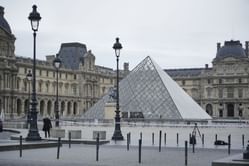
The production of Avatar began in 2005, and it took approximately four years to complete. This included the development of the story, creation of the script, pre-production, filming, and post-production, which involved extensive use of visual effects and computer animation.
The pre-production for the movie started in 2006, and the production itself began in April 2007. The filming of the movie took place in various locations, including New Zealand and Los Angeles, and lasted for approximately 14 months. The post-production process, which involved extensive use of visual effects and computer animation, took nearly three years to complete. "Avatar" was finally released in December 2009, after a production process that lasted for over four years.
What delayed Avatar?

There were several factors that contributed to the delay in the production of "Avatar." One of the biggest factors was the need for cutting-edge technology to bring the film to life. Director James Cameron had a very specific vision for the movie, which required advanced motion capture technology, high-quality 3D animation, and other sophisticated visual effects. At the time when Cameron first conceived of the movie in the mid-1990s, this technology did not yet exist.
In addition, Cameron's commitment to environmental themes in the movie required extensive pre-production work to create the world of Pandora, including detailed designs for the flora and fauna, as well as the creation of a new language for the Na'vi characters. The production of "Avatar" was also delayed due to the extensive post-production work required to create the movie's complex visual effects. Cameron and his team spent nearly three years in post-production, using new technologies and techniques to create the lush, immersive world of Pandora and its inhabitants.
To make the film possible, Cameron and his team developed a new generation of motion capture technology that allowed them to create more realistic and expressive digital characters. They also developed new techniques for lighting and rendering, as well as new software and hardware to handle the vast amount of data generated by the film's complex visual effects.
Overall, the production of "Avatar" was a massive undertaking that required years of planning and development, as well as a significant investment in new technology and techniques. However, the end result was a groundbreaking film that set a new standard for visual effects in Hollywood.
When did James Cameron start working on Avatar?

James Cameron first came up with the idea for "Avatar" in the mid-1990s, shortly after the release of his hit movie "Terminator 2: Judgment Day" in 1991. Cameron had a long-standing fascination with science fiction and had been exploring the idea of creating a film that would transport audiences to an entirely new world.
According to Cameron, the inspiration for "Avatar" came from a childhood dream he had about being able to fly, as well as his fascination with environmental issues and the struggle between indigenous cultures and industrialization. He began developing the concept for the film in the mid-1990s, but at the time, the technology did not exist to bring his vision to life on the big screen.
Cameron shelved the idea for a while and worked on other projects, including the blockbuster hit "Titanic," which was released in 1997. However, he continued to develop the concept for "Avatar" over the years, refining the story, characters, and visuals in his mind. It was not until the mid-2000s that technology had advanced enough to allow Cameron to bring "Avatar" to the big screen in the way he had envisioned it.
What was the new technology used in Avatar?

"Avatar" used a range of new and advanced technologies to create its groundbreaking visual effects, many of which were developed specifically for the film. Here are some of the key technologies used in the making of "Avatar":
Performance capture technology: "Avatar" was one of the first films to use advanced motion capture technology to create realistic and expressive digital characters. This involved placing motion capture sensors on actors' bodies and faces, which captured their movements and expressions as they performed their roles in a motion capture studio.
Virtual camera technology: Cameron and his team developed a new virtual camera system that allowed them to see the motion capture performances in real-time in a virtual world. This allowed the filmmakers to create complex camera movements and capture the action from multiple angles.
3D stereoscopic filmmaking: "Avatar" was one of the first films to use 3D stereoscopic filmmaking on a large scale. This involved using advanced camera rigs and projection systems to create a 3D viewing experience in theaters.
Custom software and hardware: Cameron and his team developed a wide range of custom software and hardware to handle the vast amount of data generated by the film's complex visual effects. This included new software for lighting and rendering, as well as new hardware to handle the massive amounts of data created by the film's production process.
Facial performance capture: "Avatar" also used a new technology called "facial performance capture," which captured the actors' facial expressions in minute detail. This allowed the digital characters to display a range of nuanced emotions and expressions, making them more lifelike and believable.
Overall, "Avatar" was a groundbreaking film that pushed the boundaries of filmmaking technology and helped to revolutionize the way that movies are made. The film's use of advanced motion capture and 3D stereoscopic technology, combined with custom software and hardware, allowed Cameron and his team to create a rich and immersive world that had never been seen before on the big screen.









